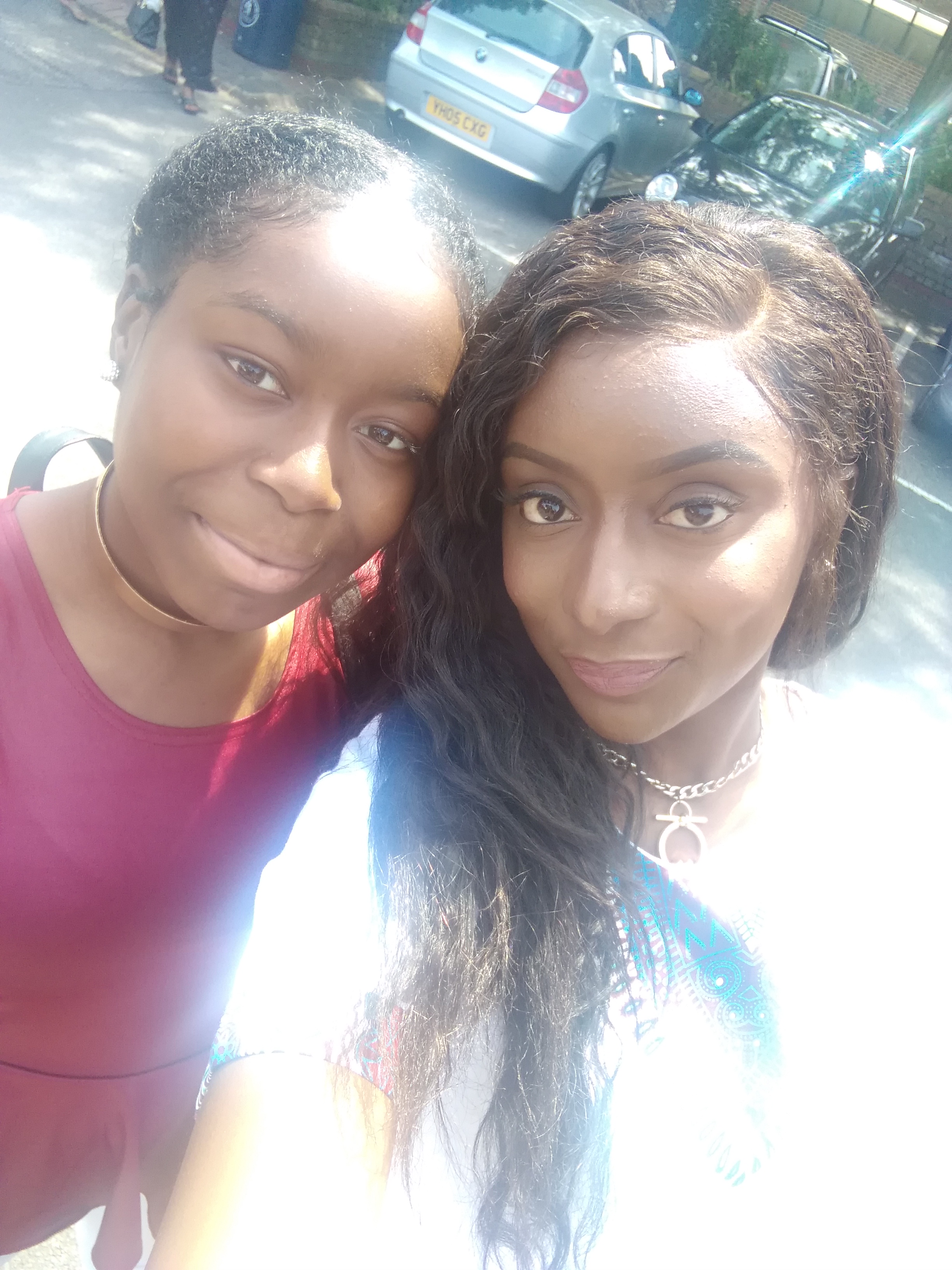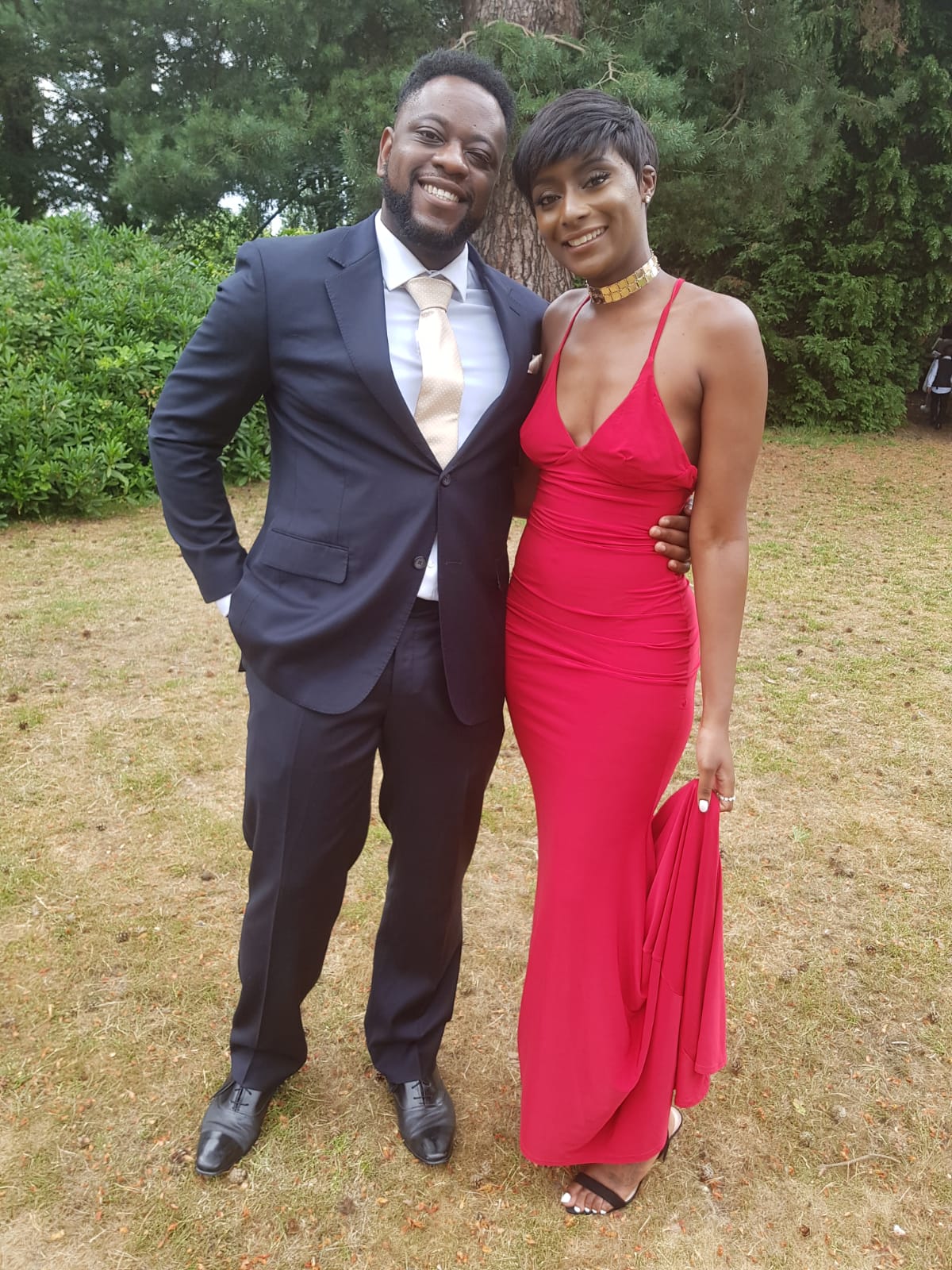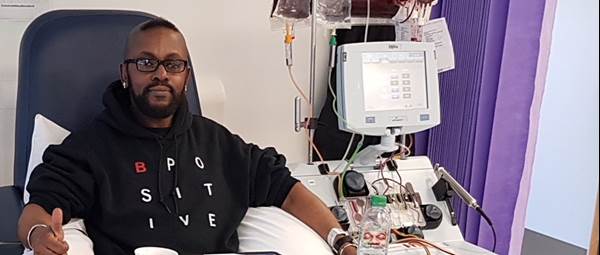Sam Awuku
In 2018, we shared a story by the journalist and best-selling author Caitlin Moran about donating blood for the first time in almost 20 years.
The scene she painted – one of “hot dust, floor polish and tea” and “love for someone you’ve never met” – resonated with many donors.
In fact, there were so many positive responses in the days and weeks that followed, and so many donors replied with wonderful and heart-warming stories of their own, that we decided we ought to make it a regular feature – Humans of Blood Donation.
This is Sam Awuku, and her life-saving story of friendship and sisterhood.
My mum has the AS genotype, often called the sickle cell trait, and there was a one-in-four chance that, if she had children with someone else with the sickle cell trait, one of her children would have sickle cell disorder.
As you would have it, the odds were right: her fourth child, my little sister Siobhan, has sickle cell. Sickle cell affects around 15,000 people in the UK and can cause intense pain. As a child, Siobhan would be admitted to hospital quite frequently. My mum would never leave her side and me, my stepdad and my siblings would go often on rotation to bring them supplies and keep them company.
 Thankfully, Siobhan has never needed a blood transfusion, but the thought of other families going through that – the hospital admissions, the helplessness of not being able to help your child, your sister, your brother, while they are in pain – is what inspired me to start donating.
Thankfully, Siobhan has never needed a blood transfusion, but the thought of other families going through that – the hospital admissions, the helplessness of not being able to help your child, your sister, your brother, while they are in pain – is what inspired me to start donating.
It was my friend David, though, who helped me to make giving blood helping others a reality.
(Picture: Sam Awuku with her sister Siobhan)
David gives blood regularly and accompanied me to my first donation. Tooting Donor Centre was new to me then but now, after 15 donations (and counting), I see plenty of familiar faces there, including the donor carer who David and I are in a blood donation advert with.
David is an Ro donor, meaning his subtype is vitally important in the treatment of sickle cell. More than half of Black people have the Ro subtype, but it’s present in just three per cent of blood donors.
I found out that this is because there is a shortage of Black donors. More donors of Black heritage are needed to help treat patients with sickle cell and I was inspired to encourage my friends and family to sign up and donate too. In 2019, I went on a mission to sign up at least one person a month.
 I posted an Instagram story to raise awareness and to get my recruits and was pleased that it sparked some interest! A few friends responded, especially keen when I told them that they would find out their blood type after their first donation, which is a great extra incentive. I managed to get 14 friends and family to sign up that year. I'm still at it and I’m always trying to get more of my friends to join me in giving blood.
I posted an Instagram story to raise awareness and to get my recruits and was pleased that it sparked some interest! A few friends responded, especially keen when I told them that they would find out their blood type after their first donation, which is a great extra incentive. I managed to get 14 friends and family to sign up that year. I'm still at it and I’m always trying to get more of my friends to join me in giving blood.
(Picture: Sam and David)
The entire process is swift and smooth, and it only takes an hour from start to finish, so it’s not hard to convince people to become donors.
As an O negative donor myself, I understand the importance of donating regularly. My blood type can be used in emergency situations when there isn't much time to find out the patient’s blood group. It’s a great feeling to be able to donate something so capable of saving lives.
I also look forward to receiving the text message to say my blood has been issued to a hospital. Knowing my one donation can help to save up to three lives really warms my heart.
Signing up to give blood is one of the best decisions I’ve made.



